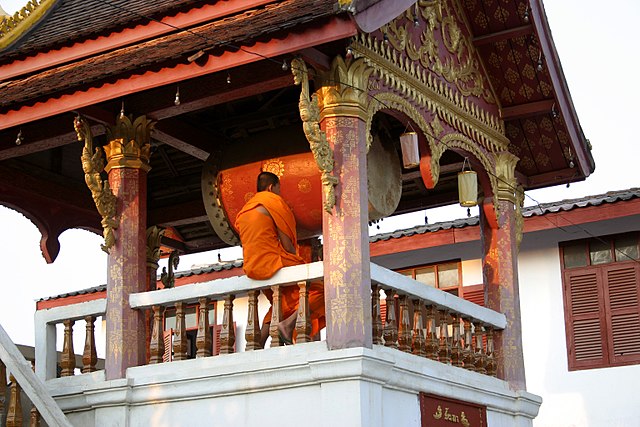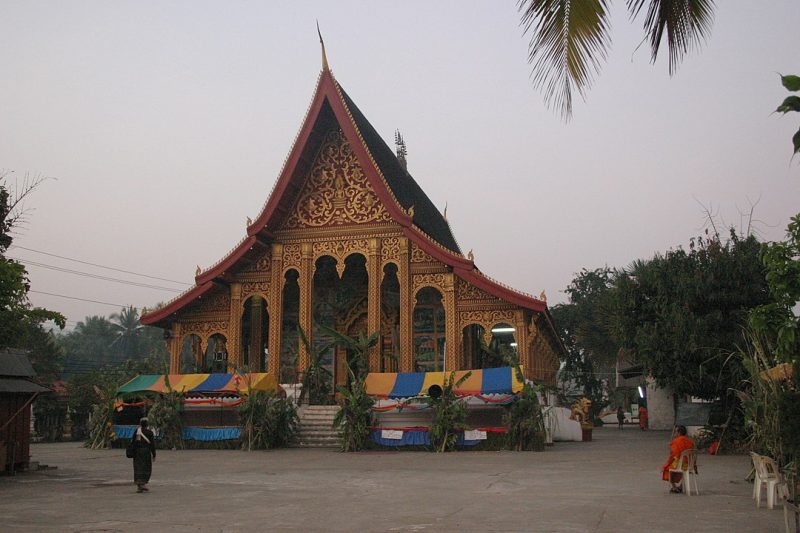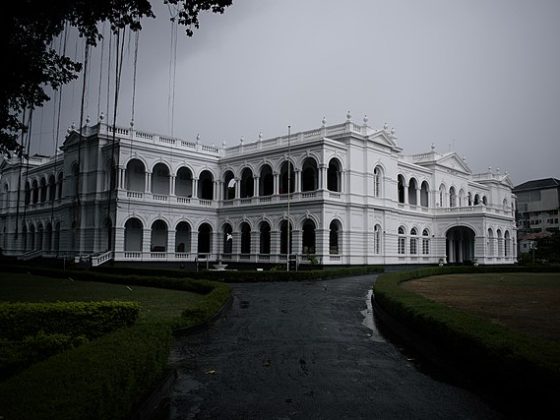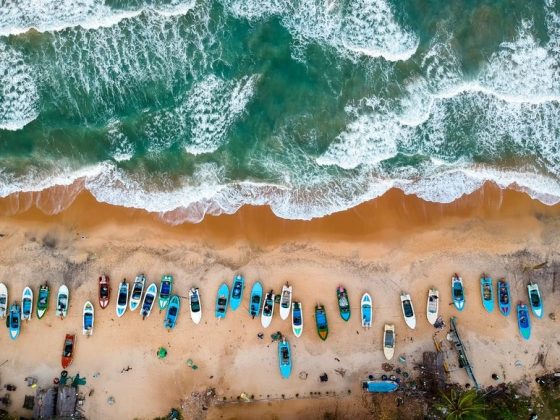Wat Manorom, Luang Prabang is one of the oldest Buddhist monasteries in Laos. Tourists and devotees from all over the world gather here to see the sleeping bronze Buddha statue which is 6m long. If you find yourself in the ancient, spiritual city of Luang Prabang you must pay a visit to Wat Manorom as it will wash your spirit with a sense of calm and serenity. Here are some things you should know before paying a visit.

What to wear
First and foremost, you must keep in mind that this is a religious premise. There are certain dress codes both men and women need to adhere to as there are Buddhist monks in residence here. Sleeveless attire and trousers or skirts bearing your knees and thighs are prohibited. You are also required to take off any hats or caps and shoes when you enter the temple.
Getting there
Wat Manorom is located on the outer face of the old walls in Luang Prabang. The best way to reach is either by a tuk or walking. If you’re staying at a hotel in Luang Prabang the likes of Avani+ Luang Prabang, it is only a short 10min walk. You can also hire a tuk for around USD 3 for a round trip. You also have the option of renting a motorbike for the day.
Historical Significance
This temple was rumoured to be built in the 14th century by King Samsenethai. Legend says that he had it built to place his ashes, but this remains inconclusive due to lack of evidence. The temple has had a very tumultuous and violent past; none of the original structure remains as it was destroyed and rebuilt many times due to vicious attacks. In 1887, the Chinese Black army looted the temple, dismembering the statue for the diamonds and other precious stones attached to it.
Architecture
The current structure was built in 1972. The beautiful sim you see today was added with the gold-painted walls and the beautifully decorated entrance. The inside of the temple is decorated with intricate and breathtaking paintings depicting the notable incidents of Lord Buddha’s life. The famous bronze statue was also reconstructed. Wat Manorom is also a non-profit institution providing education to local children as well as Buddhist monks.











